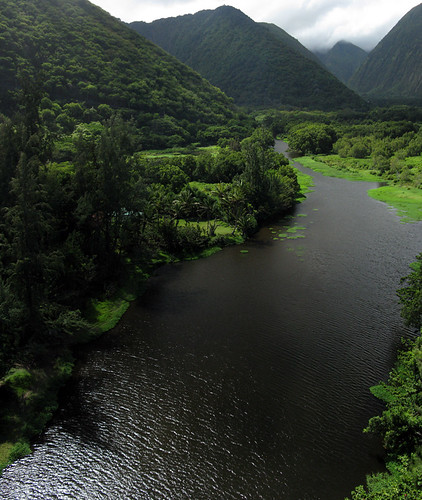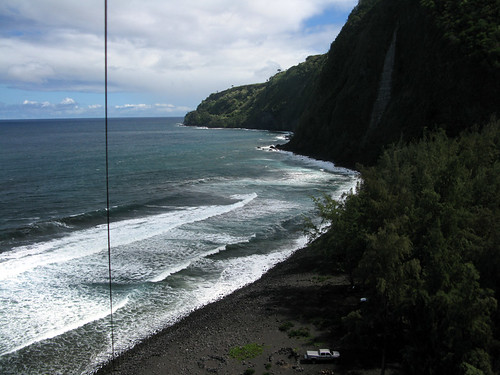
After a year of trying, on and off, I finally flew a camera in Waipi`o Valley.
The history of Waipi`o, like the history of Hawai`i itself, is long, varied, and way too easy to simplify at the expense of the really interesting bits. (If that doesn't get you Googling "waipio valley" then I didn't do my job right.)
Since human occupation of the Big Island, it has been used for agriculture with few interruptions. In pre-European-Contact days, at various times it supplied the Islands with food during times of drought. In post-Contact days, it continued in the role of being one of the major agricultural concentrations in the Islands. In the early 1940's it was heavily populated and cultivated. But the tsunami of 1946 wiped out almost everything in the valley, and few of the residents who had spent their lives there felt inclined to return.
Nonetheless people did come back, and to this day it is still being farmed by people who choose to risk the tsunamis, the floods, and the other conditions that can happen there. It's not hard to see why.

The biggest problem with doing KAP in Waipi`o is that the prevailing winds come up the coast and around the cliffs to the south. This windward view pretty much tells it all. Cliffs almost a thousand feet high make for interesting wind inside the valley. I found three distinct strata, all within 500' of the valley floor. "Turbulence" is putting it mildly. Nonetheless, the wind was steady enough for me to take several panoramic sequences.

So what was the trick? Using the right kite, of course. On previous attempts I'd flown a Flowform 16, which needs a fair bit of wind in order to fly a camera. I started with the Flowform, but switched to my 6' Rokkaku that my friend made for me. It can fly the camera with less wind, at a higher line angle, and because it's framed in fiberglass it can deal with the gusts better than a carbon fiber framed kite would be able to.
Even so, toward the end it was catching more wind than it could handle. After landing the camera I had a bit of a fight on my hands to get the kite down safely. Luckily the Rokkaku takes its origins from a Japanese figher kite, and as such its moves are actually pretty predictable and very well documented. In a power-dive you let out line quickly, and the kite rights itself and heads for the sky. I had two power-dives, both of which turned around quickly with careful line handling. In the end all my gear made it down in one piece.
It's been a long time since I've done any KAP worth posting. I couldn't be happier with how the day turned out.
Tom
No comments:
Post a Comment